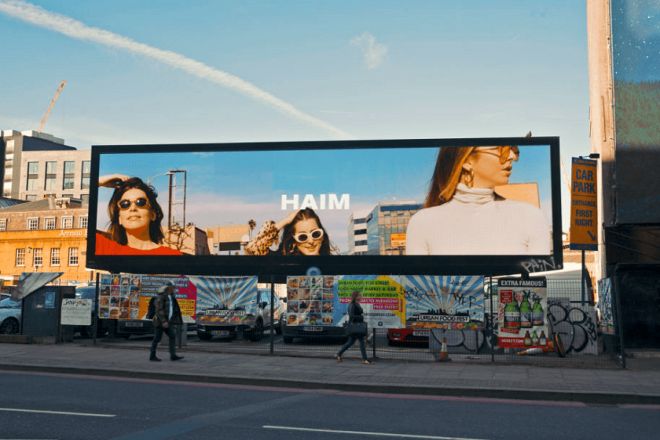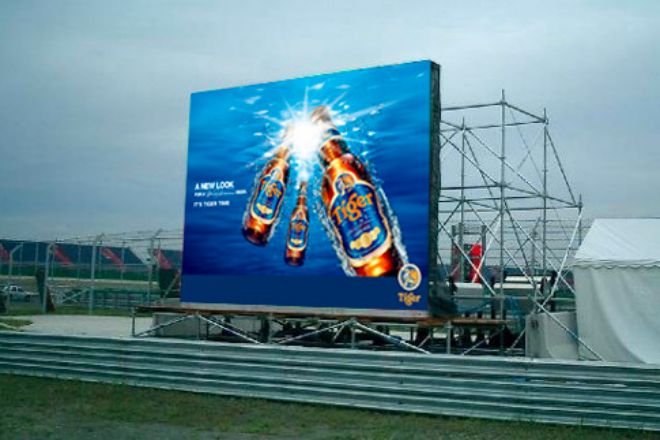Introduction

Avec le développement rapide de la science et de la technologie, Écrans d'affichage LED ont été largement utilisés dans divers domaines de la société moderne et leurs avantages incluent une luminosité élevée, une haute définition et une faible consommation d'énergie.
De la publicité commerciale aux transports urbains, du divertissement culturel à l'affichage d'informations publiques, les écrans d'affichage LED sont partout, enrichissant considérablement notre expérience visuelle. Cependant, avec le nombre croissant d’écrans d’affichage LED, le problème de pollution lumineuse qu’ils entraînent est devenu de plus en plus important.
La pollution lumineuse, en tant que nouvelle source de pollution dans les villes modernes, affecte non seulement la vie normale des gens et l'environnement écologique, mais constitue également une menace potentielle pour la santé humaine. En tant que l'une des principales sources de pollution lumineuse, la luminosité élevée et la correspondance inappropriée des couleurs des écrans d'affichage LED entraînent souvent des problèmes tels qu'une fatigue visuelle et une diminution de la qualité du sommeil.
Par conséquent, l’exploration des mesures de protection des écrans d’affichage LED afin de prévenir la pollution lumineuse revêt non seulement une grande importance pratique, mais est également une condition inévitable pour promouvoir la construction de villes vertes et durables.
1. Aperçu de la pollution lumineuse des écrans d'affichage LED
1). Définition et classification de la pollution lumineuse
Définition : La pollution lumineuse fait généralement référence à diverses lumières qui affectent l'environnement naturel, ont des effets néfastes sur la vie humaine normale, le travail, le repos et les divertissements, nuisent à la capacité des personnes à observer des objets, provoquent un inconfort humain et nuisent à la santé humaine.
Classification : La pollution lumineuse est principalement divisée en pollution blanche, lumière du jour artificielle, pollution lumineuse colorée, pollution éblouissante, pollution radioactive, inondations lumineuses, monotonie visuelle, occlusion visuelle, quasi-flash, etc.
2). Caractéristiques de la pollution lumineuse des écrans d'affichage LED
Éblouissement causé par une luminosité élevée : la luminosité élevée des écrans d'affichage à LED est particulièrement importante la nuit, ce qui facilite la formation d'éblouissements, provoquant des interférences avec la vision des conducteurs et des piétons et augmentant le risque d'accidents de la route.
Couleur et contraste inappropriés : certains écrans d'affichage LED sont trop lumineux ou éblouissants en termes de paramètres de couleur et de contraste, et une visualisation à long terme entraînera une fatigue visuelle.
Éclairage excessif la nuit : certains écrans d'affichage LED maintiennent encore une luminosité élevée la nuit, ce qui entraîne non seulement un gaspillage d'énergie, mais affecte également la qualité du sommeil des gens.
3). Impact de la pollution lumineuse sur l'environnement et l'homme
Destruction de l’écosystème : Une pollution lumineuse excessive affectera l’horloge biologique des animaux et des plantes, interférera avec leur croissance et leur reproduction normales et pourra même conduire à l’extinction de certaines espèces.
Risques pour la santé humaine : la pollution lumineuse peut perturber l'horloge biologique du corps, affecter la qualité du sommeil et provoquer à long terme une série de problèmes de santé, tels que la neurasthénie et une diminution de la vision.
Qualité du sommeil réduite : une pollution lumineuse excessive la nuit peut inhiber la sécrétion de mélatonine dans le corps humain, affectant ainsi la qualité du sommeil et entraînant des problèmes tels que la fatigue et le manque de concentration.
Confort visuel réduit : des paramètres de couleur et de contraste inappropriés, ainsi que l'éblouissement provoqué par une luminosité élevée, peuvent réduire le confort visuel des personnes, et une visualisation à long terme peut entraîner une fatigue visuelle.
4). Données et informations spécifiques :
Selon une étude de 2021, la pollution lumineuse mondiale a augmenté d’au moins 49% au cours des 25 dernières années. Dans certaines régions, cette augmentation peut atteindre 400%.
La surveillance des écrans d'affichage LED dans le quartier central des affaires d'une certaine ville a montré que les points d'échantillonnage avec une luminosité supérieure à 1 000 cd/m² représentaient 271 TP3T du total. Ces écrans d'affichage à haute luminosité sont particulièrement visibles dans l'environnement nocturne, provoquant une forte stimulation visuelle.
Les écrans d'affichage LED suréclairés la nuit affectent non seulement la vision des gens, mais peuvent également avoir un impact sérieux sur la croissance et le développement des habitats environnants.
2. Mesures techniques pour la protection contre la pollution lumineuse des écrans d'affichage LED

1). Gestion de la luminosité et des couleurs
- Système de réglage automatique de la luminosité :
Les écrans d'affichage à LED doivent être équipés d'un système capable d'ajuster automatiquement la luminosité de l'affichage en fonction de la luminosité ambiante. Par exemple, l'écran d'affichage LED de Tongpu Technology collecte la luminosité ambiante en temps réel et transmet les informations à la salle de contrôle centrale.
La salle de contrôle centrale calcule automatiquement la luminosité de sortie d'affichage la plus appropriée en fonction des données reçues pour éviter le problème de pollution lumineuse provoqué par une luminosité élevée. Selon les recherches, lorsque la luminosité de l'écran d'affichage dépasse 60% de la luminosité ambiante, l'œil humain se sentira mal à l'aise.
- Technologie de correction des couleurs :
Utilisez la technologie de correction des couleurs pour garantir la précision et l'équilibre des couleurs de l'écran d'affichage LED afin d'éviter une correspondance des couleurs trop lumineuses ou éblouissantes.
La correction des couleurs comprend généralement des étapes telles que le réglage de la balance des blancs, le réglage de la saturation des couleurs et la correction de l'uniformité des couleurs pour garantir que l'écran peut présenter un blanc naturel à différentes échelles de gris et améliorer ou affaiblir la luminosité de la couleur de l'écran pour répondre aux exigences de couleur de l'écran. oeil humain pour différentes scènes.
- Réglage du mode nuit :
Pour les environnements nocturnes, les écrans LED doivent être réglés en mode nuit pour réduire la luminosité et le contraste ainsi que les interférences avec l'environnement et les piétons. Le réglage du mode nuit doit prendre en compte l'adaptabilité de l'œil humain et les conditions d'éclairage la nuit pour garantir que la pollution lumineuse est réduite sans affecter l'effet d'affichage.
2). Optimisation des matériaux et des procédés
- Utilisez des matériaux antireflet et antiéblouissants :
Sélectionnez des matériaux aux propriétés antireflet et antiéblouissantes pour fabriquer des écrans d'affichage LED, réduire la réflexion et la diffusion de la lumière sur la surface de l'écran et améliorer le confort visuel. Les matériaux antireflet et antiéblouissants peuvent réduire les interférences lumineuses sur la surface de l'écran, rendant l'image plus claire et plus facile à regarder.
- Améliorer la finition de surface de l'écran d'affichage :
Améliorer la finition de surface de l'écran d'affichage, réduire la réflexion diffuse de la lumière sur la surface de l'écran et améliorer la clarté et le contraste de l'image. La surface de l'écran avec une finition élevée peut réduire la diffusion et la perte de lumière, rendant l'image plus nette et les couleurs plus vives.
- Améliorer la technologie d'emballage des sources lumineuses LED :
Optimisez la technologie d'emballage des sources lumineuses LED, améliorez l'efficacité lumineuse et la stabilité des sources lumineuses et réduisez les fuites de lumière et le gaspillage. La technologie d'emballage avancée peut garantir que la lumière émise par les sources lumineuses LED est plus concentrée et uniforme, réduisant ainsi le risque de pollution lumineuse.
3). Amélioration de la conception optique
- Conception raisonnable de la distribution de la source lumineuse LED :
En concevant raisonnablement la distribution et la disposition des sources lumineuses LED, assurez-vous d'une répartition uniforme et d'une utilisation raisonnable de la lumière sur l'écran. Une distribution raisonnable de la source de lumière peut éviter une luminosité ou une obscurité excessive locale et améliorer l'uniformité et la clarté de l'image.
- Adoptez un écran antireflet :
Appliquez la technologie anti-éblouissante sur les écrans d'affichage LED pour réduire l'impact de l'éblouissement sur les téléspectateurs en réduisant la réflexion et la diffusion de la lumière sur la surface de l'écran. Les écrans antiéblouissants peuvent offrir une meilleure expérience visuelle et réduire la fatigue et l’inconfort visuels.
- Optimisez l'angle de vision de l'écran d'affichage :
Optimisez la conception de l'angle de vision de l'écran d'affichage LED pour garantir des effets d'image clairs sous différents angles. Une conception d'angle de vision appropriée peut réduire les fuites et la réflexion de la lumière sur le bord de l'écran et réduire le risque de pollution lumineuse. Dans le même temps, l’optimisation de l’angle de vision peut également améliorer le confort et la satisfaction des spectateurs.
3. Mesures de gestion pour la protection contre la pollution lumineuse des écrans d'affichage LED
1). Politique, réglementations et formulation standard
- Formuler des réglementations pertinentes sur la pollution lumineuse des écrans d’affichage LED :
Le gouvernement devrait formuler des réglementations claires sur la pollution lumineuse des écrans d'affichage LED et définir clairement les normes en matière de pollution lumineuse, les parties responsables et les sanctions en cas de violation. Cela contribuera à fournir une base juridique pour l’utilisation rationnelle des écrans d’affichage LED et à réguler l’ordre du marché.
- Établir des normes d’émission de pollution lumineuse :
Pour les écrans d'affichage LED de différents types et régions, des normes d'émission de pollution lumineuse correspondantes doivent être établies. Ces normes doivent être basées sur des recherches scientifiques et des données de surveillance réelles pour garantir que la luminosité, la couleur et d'autres paramètres des écrans d'affichage LED répondent aux exigences de protection de l'environnement.
- Renforcer l’application de la loi :
Les services gouvernementaux devraient renforcer la surveillance et l'application de la loi en matière de pollution lumineuse des écrans d'affichage LED et traiter sérieusement les violations. Assurer la conformité des écrans d’affichage LED grâce à une combinaison d’inspections régulières et d’inspections aléatoires.
2). Urbanisme et aménagement
- Planification raisonnable de l'emplacement d'installation des écrans d'affichage LED :
En urbanisme, l'emplacement d'installation des écrans d'affichage LED doit être pleinement pris en compte pour éviter d'installer des écrans d'affichage à haute luminosité et de grande taille dans les zones sensibles telles que les zones résidentielles, les écoles et les hôpitaux.
Dans le même temps, il convient de veiller à ce que l'emplacement d'installation de l'écran d'affichage soit coordonné avec l'environnement environnant afin de réduire les conflits visuels.
- Tenez compte des conditions d’éclairage de l’environnement :
Lors de l'installation d'écrans d'affichage à LED, les conditions d'éclairage de l'environnement doivent être pleinement prises en compte. Par exemple, dans les zones plus sombres, la luminosité de l’écran d’affichage doit être réduite de manière appropriée ; dans les zones plus lumineuses, le contraste de l'écran d'affichage peut être augmenté de manière appropriée pour garantir la clarté de l'image.
- Limiter le nombre et l’échelle des écrans d’affichage :
Dans les zones très fréquentées telles que les zones centrales urbaines ou les artères de circulation, le nombre et la taille des écrans d'affichage LED doivent être limités pour éviter une concentration et une utilisation excessives. Réduisez le risque de pollution lumineuse en planifiant et en contrôlant rationnellement le nombre et l’échelle des écrans d’affichage.
3). Gestion des opérations et maintenance
- Vérifiez régulièrement la luminosité et la couleur de l'écran d'affichage :
L'unité d'exploitation doit régulièrement vérifier et déboguer la luminosité, la couleur et d'autres paramètres de l'écran d'affichage à LED pour s'assurer qu'il répond aux normes et exigences pertinentes pour les écrans d'affichage qui ne répondent pas aux normes, la rectification et l'ajustement doivent être effectués dans une manière opportune.
- Gérer en temps opportun les pannes d’écran :
Pour les écrans d'affichage LED défectueux, l'unité d'exploitation doit les manipuler et les réparer en temps opportun pour éviter les problèmes de pollution lumineuse causés par des pannes. Dans le même temps, un mécanisme solide de gestion des défauts doit être établi pour garantir le fonctionnement normal de l'écran d'affichage.
- Renforcer la formation du personnel et améliorer le niveau de gestion :
L'unité d'exploitation doit renforcer la formation et l'éducation du personnel de direction et du personnel de maintenance pour améliorer leur niveau professionnel et leur sensibilisation à l'environnement. Grâce à la formation et à l’éducation, ils peuvent mieux comprendre et mettre en œuvre les mesures et exigences pertinentes en matière de protection contre la pollution lumineuse.
4. Éducation du public et participation à la protection contre la pollution lumineuse des écrans d'affichage LED

1). Améliorer la sensibilisation du public à la pollution lumineuse.
- Réaliser des activités de vulgarisation des connaissances sur la pollution lumineuse :
En organisant diverses conférences, expositions, ateliers, etc., vulgariser auprès du public les connaissances de base, les dangers et les mesures de protection liées à la pollution lumineuse. Ces activités peuvent être réalisées dans des lieux publics tels que les écoles, les communautés, les centres commerciaux, etc., pour attirer un public plus large.
- Renforcer la publicité et l’éducation dans les médias :
Utilisez la télévision, la radio, les journaux, Internet et d'autres plateformes médiatiques pour publier régulièrement des informations, des articles et des publicités de service public liés à la pollution lumineuse afin d'accroître l'attention et la sensibilisation du public à la pollution lumineuse. Dans le même temps, des experts et des universitaires peuvent être invités à rédiger des articles de vulgarisation scientifique pour répondre aux questions et à la confusion du public.
2). Encourager le public à participer à la surveillance.
- Mettre en place un mécanisme de plainte et de signalement en cas de pollution lumineuse :
Mettre en place des canaux spéciaux de plainte et de signalement, tels que des lignes d'assistance téléphonique, des plateformes en ligne, etc., pour permettre au public de se plaindre et de signaler la pollution lumineuse des écrans d'affichage LED. Pour les plaintes et les rapports reçus, les départements concernés doivent enquêter et traiter en temps opportun, et faire part des résultats au public.
- Renforcer la communication et la coopération entre les communautés et les entreprises :
Encourager les communautés et les entreprises à établir un mécanisme de communication et de coopération pour promouvoir conjointement la protection de la pollution lumineuse des écrans d'affichage LED. Les entreprises peuvent adopter activement les suggestions et opinions de la communauté, ajuster la luminosité, la couleur et d'autres paramètres de l'écran d'affichage et réduire l'impact de la pollution lumineuse.
Dans le même temps, la communauté peut également fournir le soutien et l'aide nécessaires aux entreprises pour maintenir ensemble un bon ordre environnemental.
3). Promouvoir les concepts de protection de l'environnement et prôner la vie verte
Tout en promouvant la protection de la pollution lumineuse des écrans d'affichage LED, promouvez activement les concepts de protection de l'environnement et les modes de vie écologiques. Encouragez le public à économiser de l'énergie et à réduire les émissions, à réduire l'éclairage inutile et à utiliser les produits électroniques de manière raisonnable pour réduire le niveau global de pollution lumineuse.
En organisant des activités sur le thème de la protection de l'environnement et en publiant des guides de vie écologique, nous pouvons améliorer la sensibilisation et la participation du public à l'environnement. Dans le même temps, nous pouvons renforcer la coopération avec les organisations de protection de l'environnement, les groupes de bénévoles, etc., pour promouvoir conjointement le développement de la protection de l'environnement.
Grâce à la mise en œuvre des mesures ci-dessus, nous pouvons améliorer efficacement la sensibilisation et la participation du public au problème de la pollution lumineuse causée par les écrans d'affichage à LED et créer une bonne atmosphère de préoccupation commune et de prévention et de contrôle conjoints dans l'ensemble de la société.
Conclusion
Grâce à la discussion ci-dessus, il n’est pas difficile de constater que la protection de la pollution lumineuse des écrans d’affichage LED est une question complexe et urgente. Elle implique de multiples aspects tels que la technologie, la gestion et la réglementation, et nécessite les efforts conjoints du gouvernement, des entreprises et de tous les secteurs de la société.
Enfin, si vous souhaitez en savoir plus sur les écrans d'affichage LED, veuillez nous contacter.
